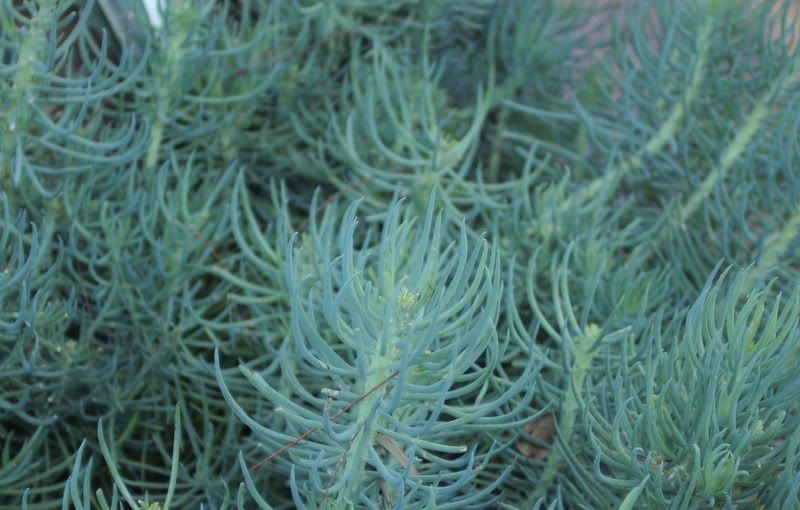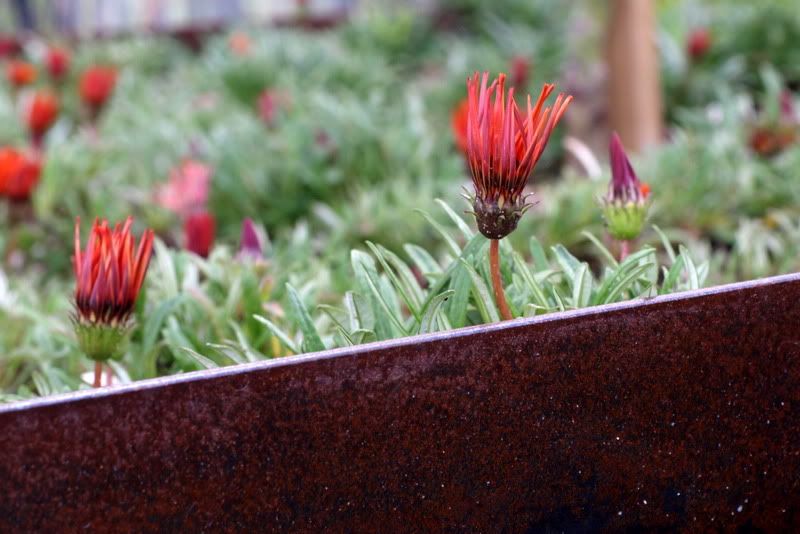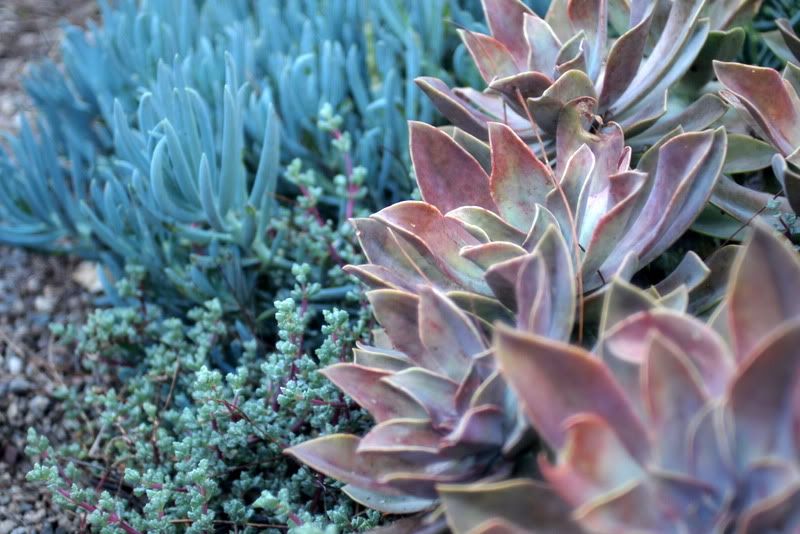Great name for a garden blog (or coffee house, dance company). The term has stuck with me since first
reading it used by Gertrude Jekyll in her color theories for gardens.
I can’t locate my Gertrude Jekyll compendium at the moment, but I believe she used the term
“groundwork” in a painterly sense, as in to lay a foundation of grey and glaucous foliage against which
other colors will always reap the benefit by juxtaposition.
Jekyll’s exhortation to lay down a good groundwork is never far from mind when I look at the blue-grey
leaves of the succulent Senecio mandraliscae, the Blue Chalk Sticks, in the front gravel garden. It is
pure balm for the eyes, which want to linger on its soothing, icy blueness. Focusing on another color
after drinking in that cool blue gets the color receptors, rods and cones, firing on every cylinder. For
sun, this senecio is a very worthwhile plant getting lots of use here in zone 10.
Both senecios mentioned here would make great components for containers of mixed succulents in
colder zones, filling out quickly to contrast with slower growing rosette types (but watch out for vigor
matching vigor).
There no longer seems to be much need for convincing astute gardeners of the value of leaves when
planning their garden. Many of us have so absorbed this truism that our little gardens can look like
contenders for permanent installations in the hubba-hubba spring flower shows now opening across
the temperate world, where every leaf is a rich flambe or brulee, melba and bordeaux. Horticultural
appetites are in danger of being whipped up into a constant craving for dessert in the garden. And
who doesn’t love dessert? In zone 10, where tender succulents are grown outdoors year-round,
available in every color and shape imaginable, it’s easy to overindulge. I like the way a simple swath
of blue can cleanse and refresh an overstimulated palate. Remember, we live with these plants
all year, unlike colder zones who can take a breather and put the display to bed for the winter.
Though I’ve never grown a hosta in my life, I imagine the blue-leaved types would make good
groundwork, as does Festuca ‘Elija Blue’ for sun. Crambe maritima, too, if you can keep the
snails away, though more of a specimen than a carpet. Helicotrichon, Nepeta, and Stachys,
the lamb’s ears, are also appreciated for their recruitment as groundwork.
Okay. Ready for a little experiment? Blink and clear the cones with this:
Now slowly scroll to this deep orange gazania:
Any tingles? The succulent two photos above is Senecio vitalis, Narrow Leaf Chalk Sticks, which is more blue-green
and of a shrubby growth about 2 feet high. Both these senecios want to cover a lot of ground in frost-free zones but
take cutting back well, which thickens them up. Both are excellent “groundwork” succulents against which to show off
prized agaves, echevarias, crassulas , and make a wonderful background for the flowering iceplants when in bloom or
gazanias, arctotis, osteospermums.
S. mandraliscae in back, Graptoveria “Fred Ives,’ and Oscularia deltoides.
Where’s a photo stylist when you need one to handle snail-eaten leaves and jacaranda tree debris? This particular
northwest location has every advantage for good strong growth, except for the tree litter constantly raining down.




Hi there, I’ve been reading your weblog for about a month now. So I just decided to stop lurking and say hi 🙂